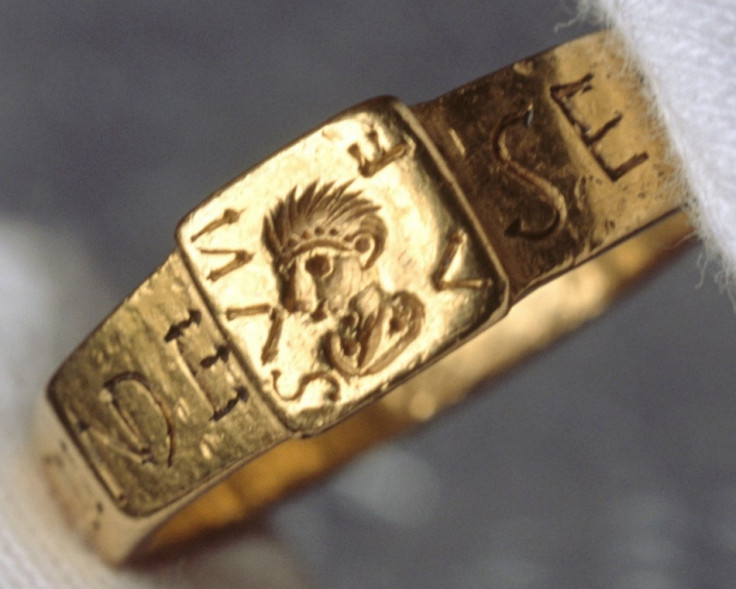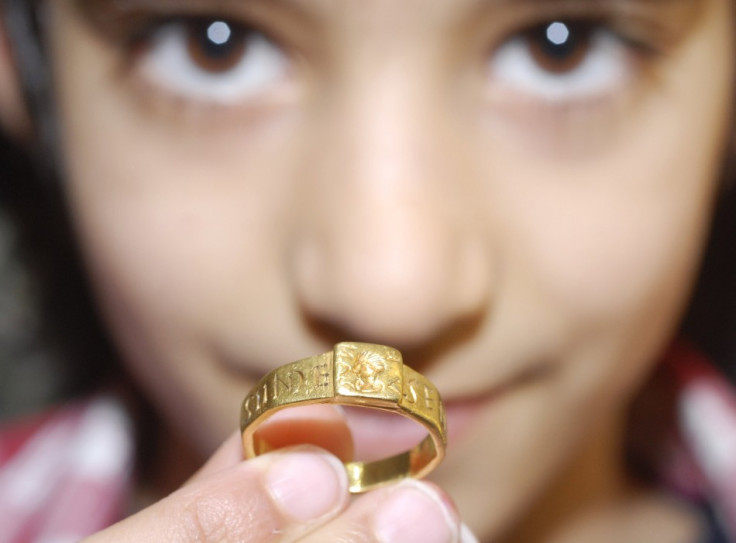Lord of the Rings: 'Cursed' Roman Ring that Inspired Tolkien's Hobbit Books Discovered in 16th Century Country House

A Roman ring thought to have inspired JRR Tolkein's The Hobbit and his Lord of the Rings trilogy has gone on display at a National Heritage site in Basingstoke.
The ring forms part of an exhibition dedicated to the author, with memorabilia from the Tolkein Society's own archive - including a book signed by the author.
For many years the ring sat forgotten in a corner of the library at The Vyne but has resurfaced for the exhibition. The Ring Room has been created to tell its story.
The 12g ring was found at an archaeological site in Silchester in 1785 and is inscribed with the words 'Senicianus live well in God'.
In the early 19<sup>th century, a curse tablet was found 80 miles away with a plea from a Roman called Silvianus asking Nodens, the god of the Lydney temple, to return a ring.
Silvianus said the ring was stolen by Senicianus and he placed a curse on the thief. The curse reads: "To the god Nodens. Silvianus has lost a ring ... among those who bear the name of Senicianus to none grant health until he bring back the ring to the temple of Nodens."

Sir Mortimer Wheeler, director of excavations at Lydney, realised the connection and asked Tolkien to work on the etymology of the name Nodens.
The author, who was professor of Anglo-Saxon at Oxford University, went to the Temple of Nodens many times for his research and would have found out about the ring and its curse. Just a year later he began work on The Hobbit.
Researchers also believe Tolkien's research inspired his dwarf characters: the area around the Temple of Nodens was known as Dwarfs Hill and was thought to be the site of an Iron Age fort and underground mines.
Lynn Forest-Hill, education officer for the Tolkien Society, said: "We were delighted to partner the National Trust in this project, and to assist with research that may shed further light on the history of this mysterious piece of gold.
"The result is a unique exhibition that delves into the ring's past, and allows visitors to decide for themselves: Is this The One Ring?

"The influences most often cited for Tolkien's creation of 'the one ring' usually take the form of literary or legendary rings such as the Ring of the Niebelungs, or the old king's ring in the 14<sup>th century story of Bevis of Hampton.
"It is particularly fascinating to see the physical evidence of the Vyne ring, with its links to Tolkien through the inscription associating it with a curse.
"It is well known that in 1929 Tolkien worked on the etymology of the name Nodens mentioned on a Roman curse stone. Significantly, in the context of his non-academic writing, he would have read the Latin inscription on the curse tablet."
The ring is larger than normal rings, with a diameter of 25mm. It is believed that it was worn on a thumb or over a glove and dates to the fourth century AD.
Along with the exhibition, a forgotten area of the walled garden in The Vyne's grounds has been transformed into the Hidden Realm - an adventure play area based on the fantasy landscapes of Tolkien's Middle Earth.
© Copyright IBTimes 2024. All rights reserved.







